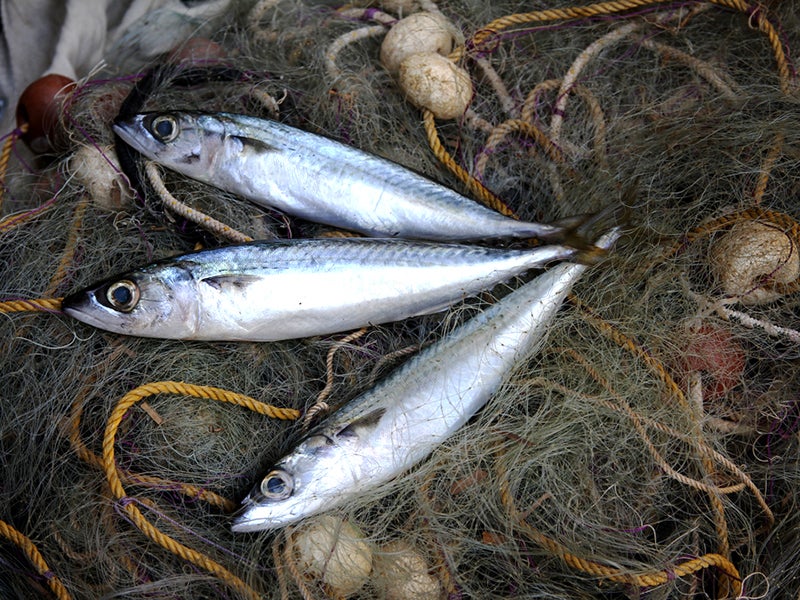Court Says Regulators Must Protect Keystone Species from Giant Trawlers
A court has ordered the National Marine Fisheries Service to consider immediately adding river herring and shad to its federal Fisheries Management Plan in order to help the species recover.

This page was published 9 years ago. Find the latest on Earthjustice’s work.
The massive nets of an industrial midwater trawling fleet comb through the water above the ocean floor in search of Atlantic mackerel and herring, leaving little in their wake. Among the casualties are millions of river herring and shad, both forage fish that are a vital food source for mid-Atlantic predator fish, marine mammals and sea birds. As victims of “bycatch,” river herring and shad populations have dwindled to less than 5 percent of their historic levels.
Last week, a federal judge issued a ruling that could help protect these two keystone fish species. The federal district court’s ruling gives the National Marine Fisheries Service (NMFS) until October 2016 to conduct an in-depth environmental analysis and to decide whether to protect them through a full federal fishery management plan. If river herring and shad are ultimately added to a plan, the fisheries service will be required to create science-based guidelines to rebuild river herring and shad populations.
The judge found that the NMFS violated the National Environmental Policy Act by failing to study the environmental impact of leaving river herring and shad unprotected and to consider measures that would bring them under immediate management. The NMFS is required to identify and manage fish that need conservation. But the service has failed to do so, despite the fact that river herring and shad populations have been decimated along the East Coast.
“The National Marine Fisheries Service invested millions of federal dollars in state waters habitat restoration for river herring and shad, but continues to undermine their recovery by failing to protect them in federal waters,” says Earthjustice attorney Roger Fleming. “This order is a step in the right direction that will require the federal agency to take a hard look at the environmental repercussions of their decision…The agency’s own scientific data shows these fish are caught and killed by the millions…and need protection.”
The court ruling means the fisheries service must act now, after years of agency inaction and successful resistance from the fishing industry, and despite public awareness of the danger of industrial trawlers.
In the summer of 2012, after considering comments from tens of thousands of Americans, both the New England and the Mid-Atlantic Fishery Management Councils took dramatic votes calling for the NMFS to increase oversight of industrial trawlers to strengthen protection of river herring, shad, Atlantic herring and mackerel and juvenile groundfish. Ocean conservation groups, family fishermen and other members of the public also cheered the councils for working hard to implement the first ever bycatch caps for river herring and shad in the Atlantic herring and mackerel fishing grounds.
Behind the scenes, industry worked against approval of the monitoring requirement, and NMFS rejected the requirement for vessels to carry observers on every fishing trip. The agency promised instead to pursue another plan that would allow the industry to pay the cost of the observers. However, the NMFS has continually delayed completing this plan, and it is unlikely that 100 percent observer coverage will be a reality any time soon. Without monitoring, bycatch caps are meaningless.
The new court order is a significant step in the right direction. It is now apparent the monitoring and bycatch measures—viewed by many as a good interim step—have been thwarted by industry and agency inaction. The need to rebuild global fish stocks is becoming ever more pressing; a recent study conducted over a decade found that global fish catches are falling three times faster than official UN figures suggest, largely due to over-fishing.
The good news is that fishing restrictions have significantly improved catch levels in some places, such as Norwegian herring and cod fisheries. With science-based catch limits, monitors, and habitat protections, the essential forage species in the mid-Atlantic region stand a good chance of recovery, helping to restore their ecosystem and fisheries that depend upon them in the future.
Earthjustice’s Oceans Program uses the power of the law to safeguard imperiled marine life, reform fisheries management, stop the expansion of offshore oil and gas drilling, and increase the resiliency of ocean ecosystems to climate change.